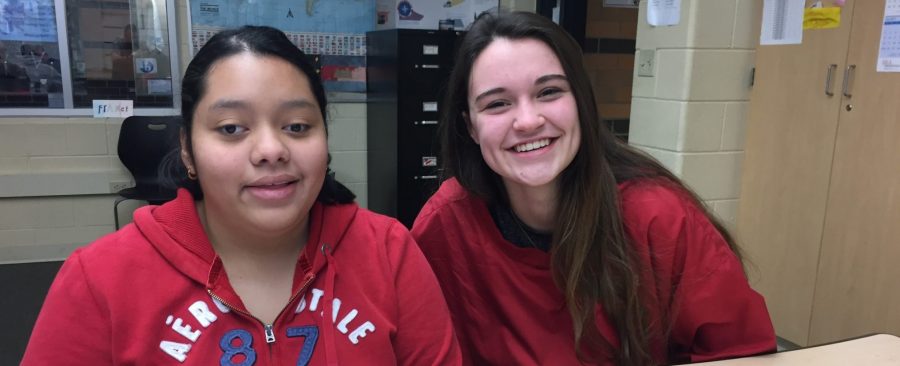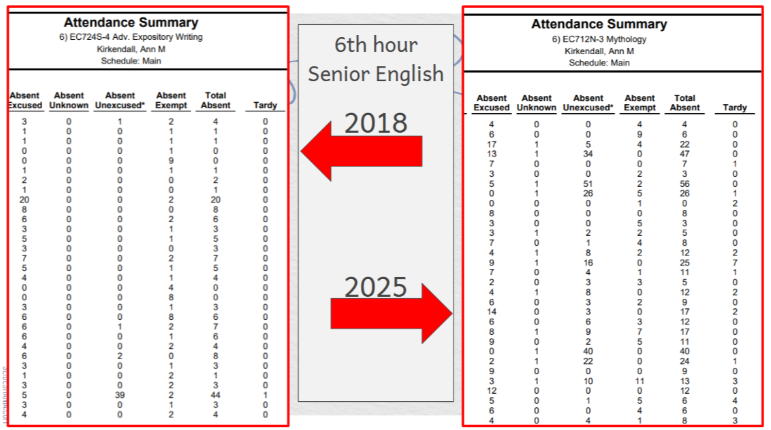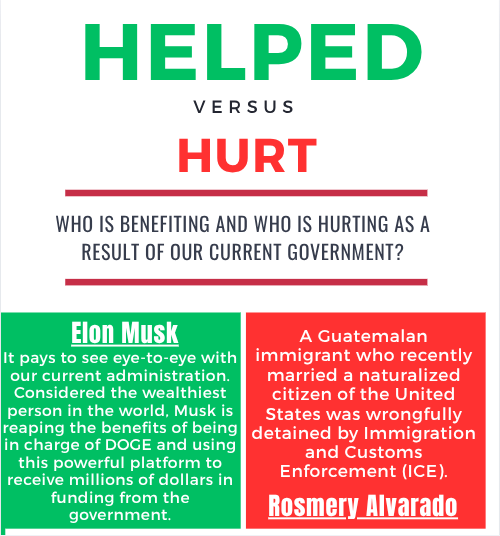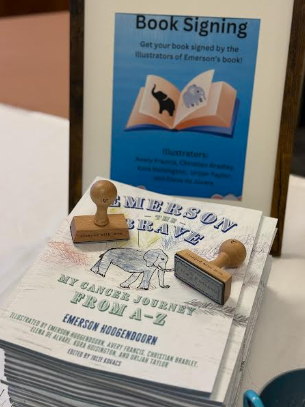Maria Reyes finds her seat in class and pulls her computer out of her backpack, saying “Hi” as students stream in around her. During her first three classes she is busy solving algebraic equations, adding details to her vase, and analyzing documents until her empty stomach signals lunchtime. After some contemplation, she decides Italian sounds good today. She pays for her food and precariously balances the tray of spaghetti in the crook of her elbow, weaving her way through crowds of people until she slides into an empty seat. At 2:43, the dismissal bell finally rings, and Maria climbs on the bus, envisioning the strike she will roll at bowling practice later tonight. This may sound like an ordinary day, but Maria is blind.
Maria was born with Septo-optic Dysplasia, a disorder characterized by an underdeveloped optic nerve and abnormal formation of the pituitary and the midline of the brain. Normal English translation: Maria can’t see, and her processing skills are slower than average.
There’s no doubt that Maria faces more challenges on a day-to-day basis than the average high school student. But over the years, she has equipped herself with skills to tackle them as they come.
In third grade, she met Rebecca Karsies, an education assistant and paraprofessional who has worked with her for almost ten years. Karsies sat beside Maria in class, explaining complex topics when the teacher covered them too quickly. It was not uncommon to see them working together in the hallway, examining 3D models or deep in conversation.
Maria took on a lot more than most of her classmates. While she was learning the typical third grade topics like multiplication tables and grammar rules, Maria was “double majoring” in both academics and the tasks of daily living. She dedicated time and energy into learning how to be independent despite her blindness.
When the teacher called out, “Let’s move on to math,” thirty desks opened as students scrambled for their calculators, pencils and papers. Maria was expected to do the same. She learned how to locate the abacus, the brailler, and any other materials she needed, or to ask someone for assistance if they were out of reach. When the class read a book or worked on a handout, Maria received her own copy in braille. However, before she could understand any of it, she had to learn this language of raised dots. Karsies remembers that Maria had a knack for spelling words, but had “dyslexia” in braille, often mixing up similar characters.

A few hours of deciphering braille and moving beads on the abacus passed until the bell rang for recess, releasing a swarm of energetic kids into the hallway. Maria trailed along the wall until she found her locker and began the painstakingly slow process of layering up to go outside. One leg at a time, she pulled on her snow pants and then her coat, fumbling with the zippers and straps along the way. Though it was difficult to watch, Karsies knew this was an important task for Maria to master, so she stood off to the side quietly. More often than not, by the time Maria headed toward the door, kids were flooding back in and recess was over.
Days when she actually made it out on the playground led to a whole different problem. As much as Maria wanted to, she did not fit the mold exactly, and for her nine or ten-year-old classmates, this was hard to understand. Students would play with Maria during recess, but when the logistics of things like going down the slide got tricky, they didn’t know how to behave. Where does her cane go? How does she get up the ladder? Sometimes it was easier for them to just avoid the problem and not invite her to play, leaving Maria on the playground with a teacher assistant instead of kids her own age.
Despite these frustrations, Maria wasn‘t phased for long. In fact, overcoming these challenges helped create the incredible person everyone knows her to be.
One of Maria’s friends, Sr. Rachel Elms fondly calls her a “sweet, smart goofball,” and there are few ways to better describe her. She comes to class every day with a determination to succeed and a bubbly personality that puts a smile on everyone’s face. Maria can find the balance between joking around and focusing on her assignments. Two of her favorite phrases are, “It’s HUMP DAY,” and “Are you ready Freddy?” followed by a loud chuckle. But even though she banters with teachers and students, Maria will not have homework if she can help it. By the end of class, she’s typing intently on her keyboard, racing against the clock to get her work done.
Maria consistently demonstrates fearlessness and flexibility. This year, her schedule includes two hands-on classes: ceramics and gym. While these subjects may introduce new problems, Maria is not ashamed of occasionally leaning on others for help. In ceramics, Soph. Kennedy Dumas demonstrates how to make coils and slabs out of clay, then lets Maria’s creative mind take over. She has already made a tiki vase and a raku piece and can’t wait to try throwing on the wheel. In gym class last year, Sr. Sydney Bolt worked with Maria to figure out the best way for her to shoot a basket. When Sydney tapped the backboard of the hoop, Maria could improve her aim and throw toward the noise. By the end of the semester, she was shooting hoops from the three point line. While others quit out of frustration, Maria looks for different solutions, and keeps searching until she finds one that works.
Maria’s positivity and open-mindedness are imperative to her success. Even though she has taken great strides since third grade, there is always room for growth. And as graduation inches closer and closer, a community of teachers and specialists are offering support and advice for her future.
Jessica Hart, her mobility instructor, comes by every week to teach skills in traveling independently. Together they work on memorizing routes around buildings, crossing streets, and orienting herself if she’s lost.
Carrie Ashba tackles some of the educational aspects of Maria’s future. During seminar, the two of them explore career options and the higher education she needs for them. Ashba’s other main focus is teaching Maria how to use technology in class. Screen readers and talking calculators go a long way in helping Maria learn, but only after she knows how to use them.
Over the summer, she attends camps such as Are You Ready and Personal Adjustment Training to improve on daily living skills. These camps are designed specifically for people with visual impairments. They practice cooking, cleaning, riding buses and other everyday tasks through challenges and incentives. Last summer, during a mobility challenge, Maria and her friend Maddy had to navigate through the mall to find the pretzel kiosk, Auntie Anne’s. After checking countless maps, asking for directions, and even following the scent, their hard work paid off in the form of sweet cinnamon pretzels and an equally sweet sense of independence.
The truth is, Maria has become incredibly capable and independent, though not everyone has realized this. They will try to guide her through the hallway when she knows exactly where she’s going, or pick up her water bottle after it fell on the floor, even though she heard the same noise they did. Maria has to remind them, “Hey, I can do that on my own,” and on the rare occasion she does need help, she will be the one to ask. Karsies, Hart, and Ashba all agree that this type of self-advocacy is crucial for Maria. She has the power to teach others what visually impaired people are capable of: living a happy, successful life.
Right now, Maria is on a roll. Her grades are high, she is participating in more activities than ever, and she is setting ambitious goals. With a dream of working on Apple’s accessibility team to provide more technology for people with visual impairments and the determination to make these dreams a reality, Maria will go far.







